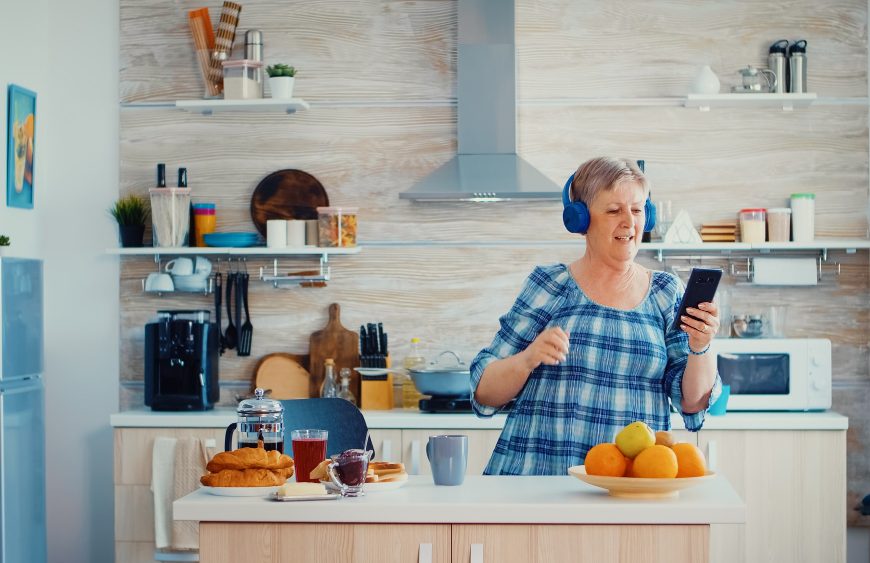The Evolution of Smart Kitchen Devices and Their Role in Shaping a Faster, Smarter, and More Efficient Culinary Experience
The modern kitchen is no longer just a collection of appliances; it is evolving into a connected, intelligent space designed to work alongside us. For busy home cooks looking to save time without compromising flavor, nutrition, or the joy of cooking, smart kitchen devices have emerged as indispensable partners. These technologies are not replacing the act of cooking but are transforming it—making it faster, more precise, and more seamless.
Today’s innovations range from AI-powered ovens that “learn” optimal cooking times to app-connected multicookers capable of replacing half a dozen separate appliances, precision induction cooktops that manage temperature automatically, smart refrigerators that track groceries and suggest meals, and voice-activated assistants that answer on-the-spot culinary questions while handling timers and conversions. Together, these tools reshape how ingredients are managed, how timing is optimized, and how cooking knowledge is accessed in real time.
This shift represents more than convenience. It represents a redefinition of what home cooking can look like—a balance of tradition and technology, where thoughtful design ensures that efficiency does not come at the cost of authenticity.
Smart Appliances That Redefine Cooking Speed and Simplicity
The acceleration of kitchen technology rests on interconnected appliances and supportive digital platforms. Let’s explore some of the most impactful devices transforming everyday meal preparation.
1. AI-Powered Ovens and Precision Cooking Tools
Smart ovens equipped with AI-driven features can recognize food types, adjust heat automatically, and send alerts via mobile apps when dishes are done. This eliminates the guesswork around doneness, reduces overcooking mistakes, and frees up mental bandwidth for other tasks. Precision induction cooktops offer similar advantages by maintaining consistent temperatures, ensuring sauces never scorch and proteins cook evenly without constant monitoring.
2. App-Connected Multicookers and Wi-Fi Instant Pots
Modern multicookers have become true time-saving heroes. Through Wi-Fi connections, users can control them from anywhere—setting slow cooks to start during a workday or checking progress while in another room. With pre-programmed modes for pressure cooking, steaming, sautéing, and even making yogurt, one smart device can shorten meal prep drastically without needing multiple kitchen tools.
3. Smart Refrigerators and Predictive Grocery Support
Refrigerators are no longer cold storage units alone. Integrated cameras and sensors allow you to check what’s inside without opening the door—or even when you’re in the store. Some units suggest recipes based on available ingredients, track expiration dates, and sync with shopping apps, ensuring fewer forgotten items and less food waste. For time-strapped families, predictive grocery planning is a game changer.
4. Voice-Activated Assistants and Guided-Cooking Platforms
Cooking can be chaotic when your hands are busy chopping or mixing. Voice assistants like Alexa or Google Home simplify the process by setting timers, answering substitution questions, or walking you through recipes step by step. Meanwhile, guided-cooking apps and platforms connect directly to smart devices, adjusting heat or time automatically as you follow along.
5. Automatic Stirring Gadgets and Context-Aware Tools
For tasks that normally demand constant attention—like stirring risotto or simmering sauces—automatic stirring gadgets take over repetitive motion. These context-aware tools adapt speeds and patterns, leaving cooks free to focus on assembling other components of the meal. It’s a small intervention that can save more time than expected.
How Smart Features Improve Both Speed and Quality
Cooking faster has long been a goal, but technology ensures that speed now comes with added intelligence. Key innovations include:
- Intuitive Meal Planning: Apps that generate weekly meal schedules based on dietary needs and time constraints reduce decision fatigue.
- Remote Monitoring and Real-Time Notifications: Being able to check in on dinner while at the office prevents delays and ensures food is ready exactly when needed.
- Automated Food Storage Management: Fridges that alert you when produce is nearing expiration minimize last-minute grocery runs.
- Adaptive Cooking Modes: Devices automatically modify temperature for different ingredients in the same dish, streamlining complex recipes traditionally requiring constant oversight.
- Data-Driven Personalization: Over time, devices track preferences—learning how crispy you like your toast or how spicy you enjoy soups—making results consistently tailored.
The Broader Benefits Beyond Efficiency
While speed is the most obvious advantage, the broader benefits are equally compelling. By handling repetitive and time-consuming tasks, smart kitchen devices allow cooks to reclaim what many consider the essence of home cooking: enjoying meals with family and friends. Instead of hovering over a stovetop, individuals can engage in conversation, share stories, or relax while dinner cooks itself with well-timed notifications.
Moreover, technology supports culinary creativity. Guided platforms expose home chefs to new cuisines and techniques that once seemed intimidating. Rather than limiting expression, automation expands it by reducing the barriers of time and uncertainty. Add sustainability to the equation—through energy-efficient induction, reduced food waste, and smarter grocery habits—and the value of a connected kitchen becomes even more compelling.
A New Generation of Home Cooking
Smart kitchen devices are not about replacing tradition but honoring it in new ways. They help preserve authentic flavors while adapting the process to fit modern, fast-paced lifestyles. Whether it’s scheduling a multicooker to have soup ready after work, checking refrigerator contents while commuting, or letting an AI oven handle roasting duties, technology ensures that the joy of cooking remains intact—just without the unnecessary stress.
The future kitchen will likely become even more seamless, with wearables syncing directly to appliances, recipe platforms that alter portion sizes instantly, and predictive systems that know what you want to cook before you do. As these innovations mature, the kitchen is poised to become the most efficient, creative, and interactive room in the home.
Final Thoughts
Smart kitchen devices represent a powerful intersection of tradition and innovation. They help us cook faster, but also more wisely—making it easier to balance flavor, nutrition, and time. For busy individuals and families, they turn meal preparation from a rushed necessity into a manageable, enjoyable experience. The transformation isn’t just about technology; it’s about reclaiming time to sit, savor, and share meals in an increasingly busy world.










